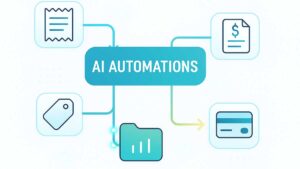Why Traditional Expense Reporting Fails Remote Teams
As remote and distributed work becomes the norm, traditional expense reporting systems simply can’t keep up. Paper receipts, manual spreadsheets, and end-of-month reconciliations break down when employees are spread across countries, currencies, and time zones.
The result? Lost receipts, inconsistent compliance, and a lack of visibility into team spending.
The good news is that with the right tools and practices, expense reporting doesn’t have to be a headache. In this guide, we’ll break down the biggest challenges remote teams face, share best practices to stay compliant and organized, and highlight the top expense management tools to consider in 2025.
Why Expense Management Matters for Remote Teams
Expense management isn’t just about cutting costs, it’s about:
- Financial accuracy: ensuring every receipt and payment is logged properly.
- Transparency: giving team leaders visibility into how money is being spent.
- Compliance: keeping policies and tax rules consistent across borders.
- Efficiency: reducing the end-of-month stress of chasing receipts.
For distributed teams, poor expense management can lead to cash flow blind spots, missed tax deductions, and frustrated employees.
Key Challenges in Remote Expense Management
Remote expense reporting looks simple on the surface, but distributed teams face unique hurdles:
1. Managing Global Expenses
Remote employees often work across continents. That means multiple currencies, exchange rates, and even languages. Without a system that handles these automatically, finance teams end up wasting hours on manual conversions.
2. Ensuring Policy Compliance
It’s harder to enforce spending rules when you can’t physically see what’s happening. Remote teams need clear guidelines and automated checks to avoid off-policy spending.
3. Delayed Logging & Disorganized Receipts
Employees often wait until the end of the month to submit expenses – leading to missing receipts and inaccuracies. A mobile-first tool that supports real-time receipt capture helps fix this problem.
4. Sharing Expense Reports
In a distributed team, finance teams and managers need easy access to reports. Manual spreadsheets don’t scale – automated exports and shared dashboards do.
Best Practices for Expense Reporting in Remote Teams
To keep spend management smooth, remote teams should follow these proven strategies:
- Set clear expense policies: Define what’s reimbursable, spending limits, and required documentation.
- Encourage real-time submission: Mobile expense reporting tools let employees scan receipts instantly.
- Automate categorization: Reduce manual work with AI-powered categorization.
- Use exports for analysis: Export reports in PDF or Excel for trend analysis and budgeting.
- Schedule monthly check-ins: Avoid the end-of-quarter pile-up with regular reviews.
What to Look for in Remote Team Expense Management Software
Not all expense tools are created equal. When choosing the right one for your team, look for:
- Mobile-first design with on-the-go receipt capture.
- Multi-currency & language support for international employees.
- Automations for categorization and compliance.
- Real-time reporting so managers can see spending instantly.
- Integrations with accounting tools like QuickBooks or Xero.
- Export & sharing options (PDF, Excel) for collaboration.
Best Expense Management Tools for Remote Teams (2025 Update)
Here’s a breakdown of the leading tools remote teams use today:
1. SparkReceipt (Best for small businesses, freelancers & distributed startups)
- Scan and upload receipts in any language and over 150 currencies.
- AI-powered categorization for instant logging.
- Integrates with QuickBooks Online for seamless bookkeeping.
- Export expense reports in Excel or PDF for easy sharing.
- Mobile-friendly, perfect for on-the-go remote workers.
Ideal for: Freelancers, consultants, small business owners, and remote startups managing global teams.
2. Expensify
- Widely known expense reporting app.
- Good for larger teams with reimbursement workflows.
- Includes policy enforcement and approval flows.
3. Zoho Expense
- Affordable tool for small to mid-sized businesses.
- Automates approvals, integrates with Zoho’s ecosystem.
4. Remote.com (Expense Management Features)
- Built into a broader HR/payroll platform.
- Useful for companies already using Remote for global hiring.
5. Rydoo / SAP Concur
- Enterprise-level solutions with advanced controls.
- Strong compliance features but less flexible for smaller teams.
How to Choose the Right Expense Tool for Your Remote Team
When evaluating platforms, consider:
- Team size: SparkReceipt or Zoho for smaller teams; Concur for enterprise.
- Integration needs: Do you use QuickBooks, Xero, or enterprise ERP systems?
- Budget: Free or low-cost solutions work well for startups, while enterprises may need full compliance suites.
- Level of automation required: AI categorization and real-time reporting save time for lean teams.
Conclusion: Simplify Spend Management for Remote Teams
Remote expense management doesn’t have to be messy. With the right mix of clear policies, automation, and tools built for distributed teams, you can cut down manual work, stay compliant, and keep your team’s finances transparent.
SparkReceipt is designed with freelancers, small businesses, and distributed teams in mind – offering global support, real-time reporting, and seamless integrations.




